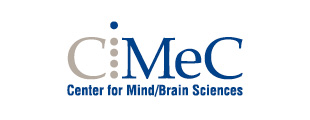Mission | Resources | Services offered | People | Contacts | Links
Mission
The Language, Interaction and Computation Laboratory (CLIC) is an interdisciplinary group of researchers primarily interested in studying verbal communication. Researcher groups linked to this CLIC include:
- Theoretical linguistics and its relation to human cognition (the LiCo group): we study the role of language in various cognitive abilities, developing theoretical and computational models of human language, of how it is learned and represented in the brain, and which of its properties may be due to functional or biological constraints. We address these questions using interdisciplinary tools that include corpora research, neural network models, linguistic data collection using web games and neurolinguistic techniques;
- Computational models of multimodality (the LaVi group): we aim at understanding multimodal communication, in which intelligent agents can converse using information received through text, images or sounds. Our research tries to understand the role of these different modalities in learning certain reasoning skills. Both the linguistic / cognitive aspects and the possible technological applications of this type of model are considered;
- Meaning and Computation Lab (the MCL group): we study computational processes involved in human language with particular attention to semantics: the meaning of quantification in natural language, logical reasoning, and explaining cross-linguistic similarities between languages. We use various complexity measures to understand the difficulty of core cognitive abilities, such as language learning, comprehension, or reasoning. Our approach is characterized by a mixture of formal (logic, computational modeling, simulations) and empirical (neurobehavioral experiments, corpus linguistics) methods.
- Human-aware Machine Intelligence (the HAMI group): we study how to ensure artificial agents are aligned with their users and can fruitfully collaborate with them. This involves developing AIs that can learn from data, reason according to symbolic knowledge, interactively request and provide information, understand the instructions they are given, and explain their reasoning to human stakeholders.
- DEep Neural ArtificiaL Intelligence (the DENALI group): This focuses on computer vision, particularly in the areas of language and vision, zero-shot classification, temporal action localization, and visual instruction tuning. The laboratory aims to develop advanced visual intelligence systems by bridging the gap between natural language processing and computer vision, recognizing and categorizing unfamiliar objects, accurately detecting and locating actions in video streams, and developing intelligent systems that can learn from human instructions and perform complex tasks accurately.
Resources
We provide open-access datasets and software on our Wiki page.
Services offered
In addition to a CPU cluster, the CLIC has eight NVDIA GPUs at its disposal. For instructions, see the server wiki page.
People
- Raffaella Bernardi
- Paolo Rota
- Jakub Szymanik
- Stefano Teso (CLIC Scientific Advisor)
- Roberto Zamparelli
- Matteo Giovannelli (IT technician)
Contacts
CLIC is situated in Palazzo Fedrigotti, corso Bettini 31, 38068 Rovereto (Tn). For any inquiry send an email to the cimec.clic-lab@unitn.it
Links
We collaborate with the Center for Language Studies.
We are a partner in the European Masters Program in Language & Communication Technologies.

